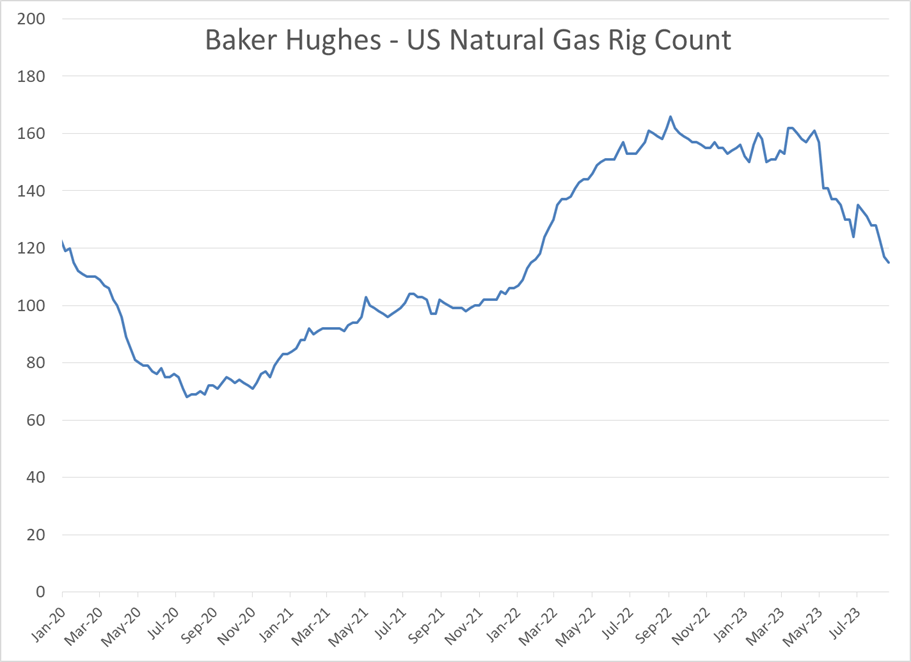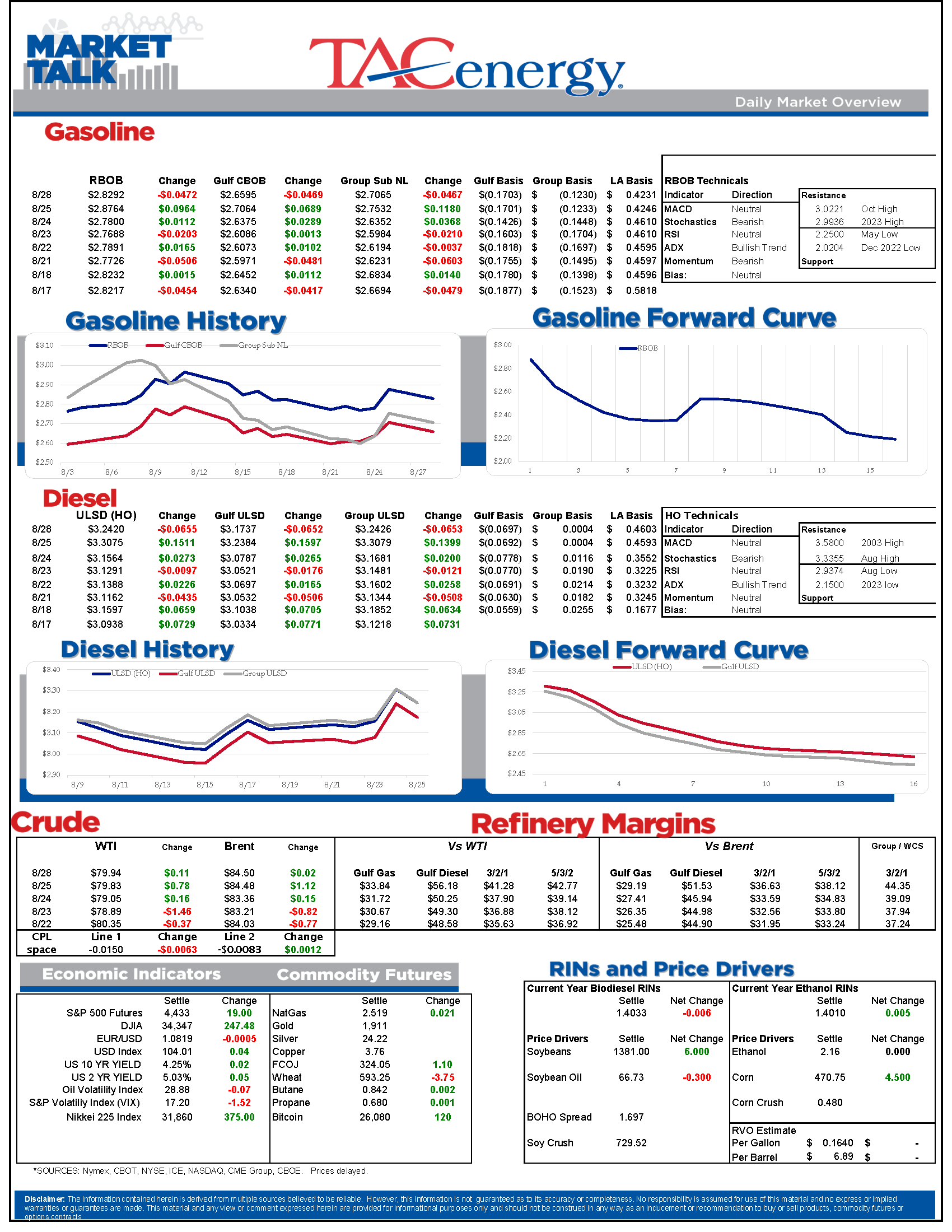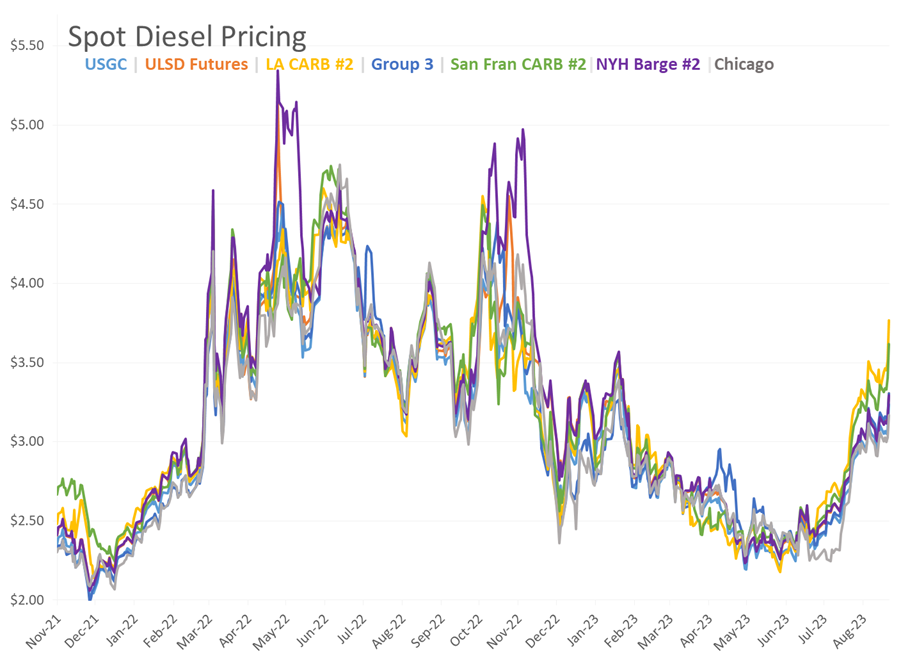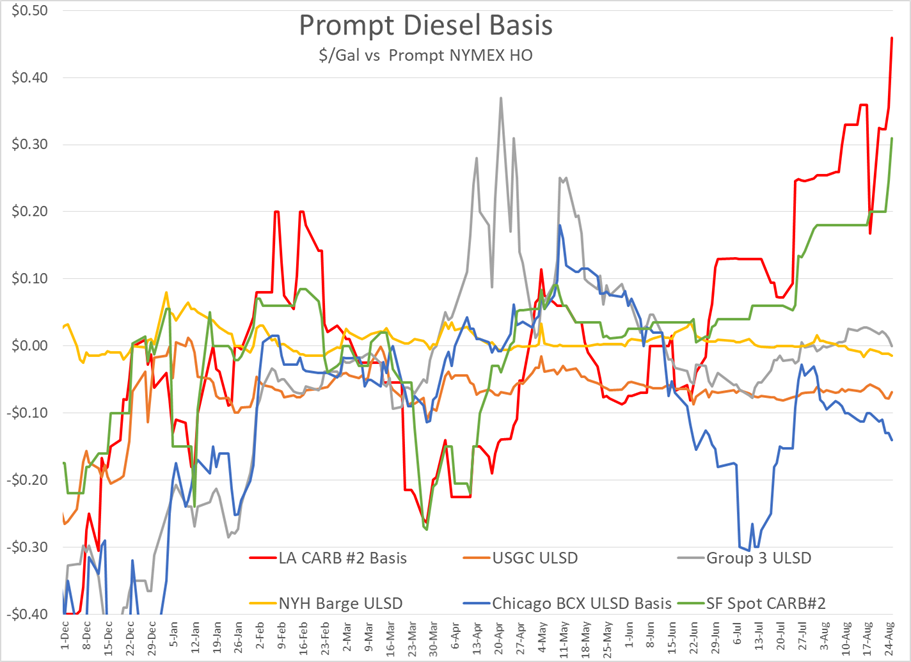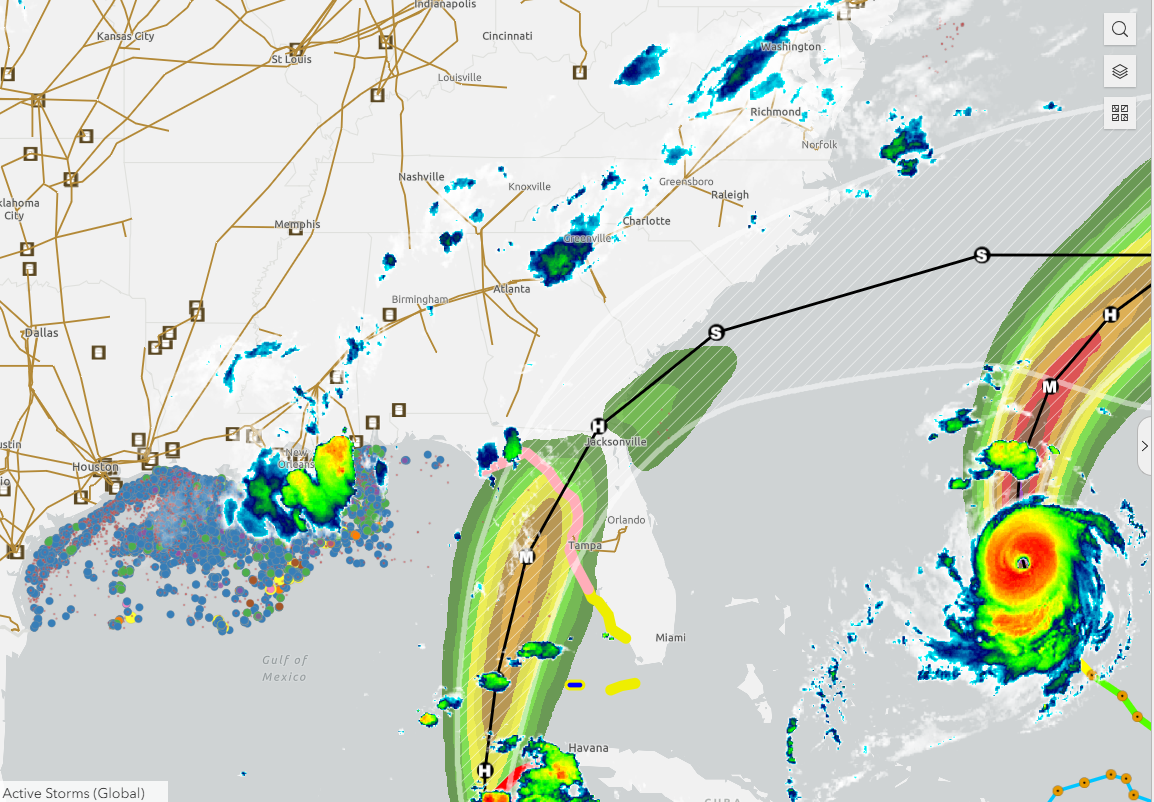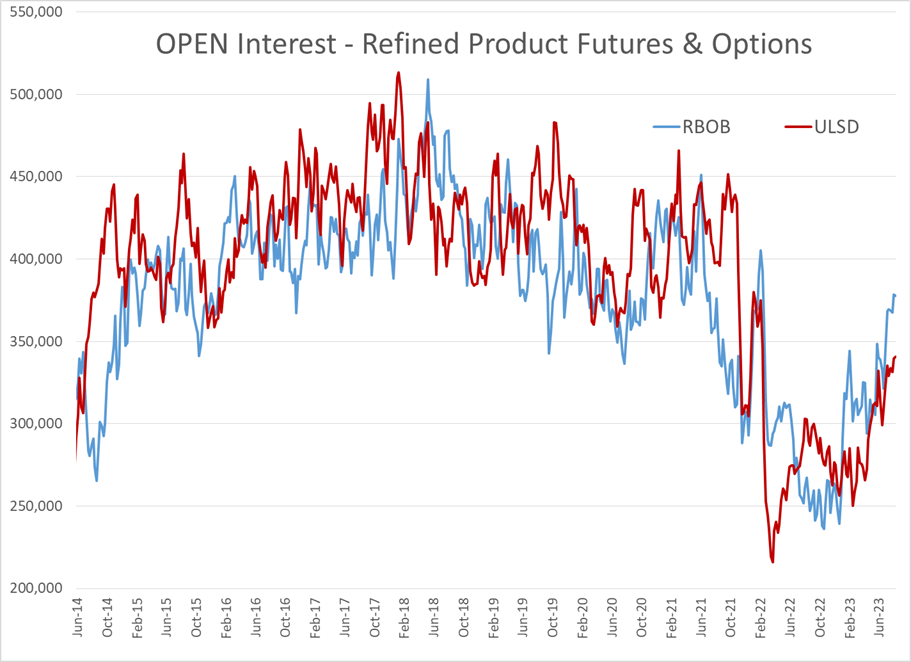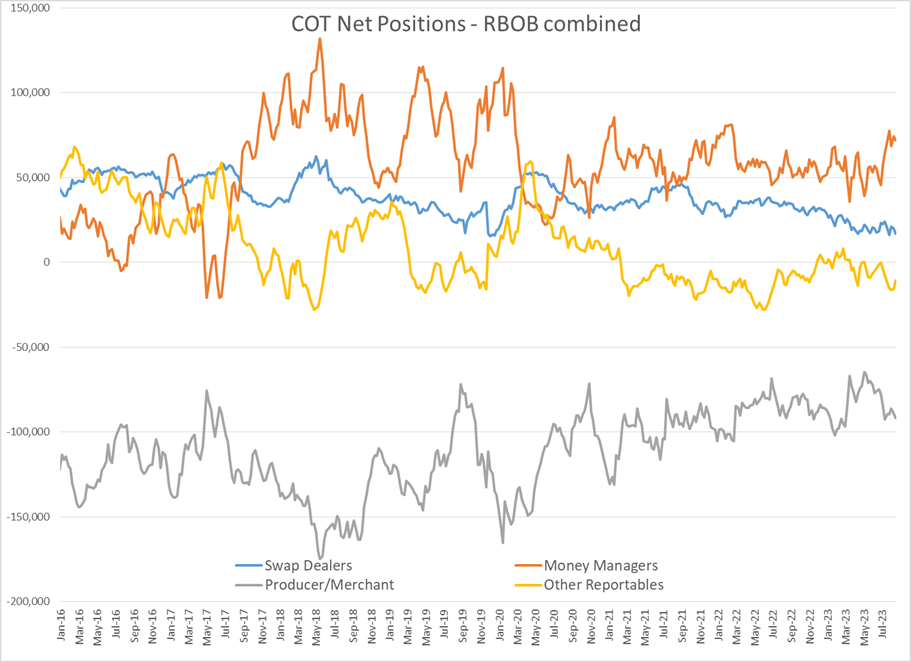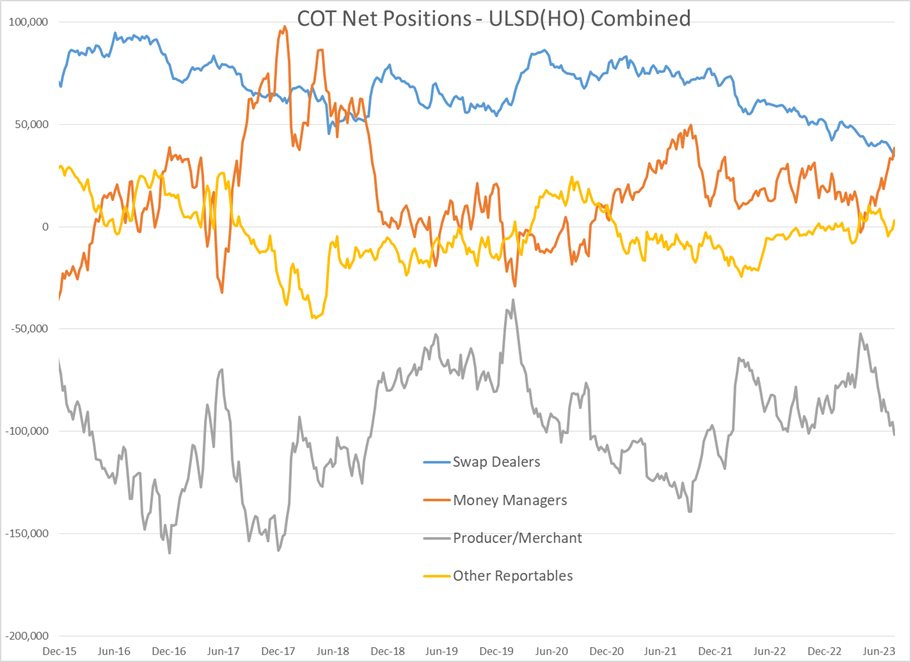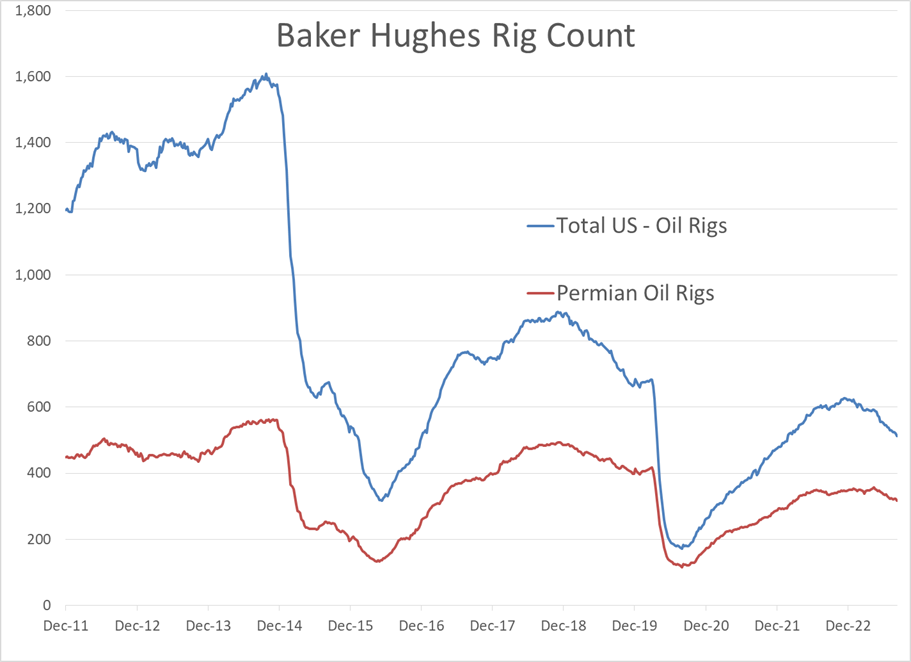Concerns Over Refinery Issues Seemed To Be The Major Theme That Sparked The Rush Of Panic Buying Friday

Energy prices are coming back to reality this morning after a runaway Friday rally got a bit out of control. ULSD futures led the way in both directions, adding 15 cents Friday to hit a new 7 month high at $3.3355, before pulling back by 7 cents this morning as cooler heads seem to be prevailing. Despite that pullback, the strong finish last week keeps the door open for a rally towards the 2023 high of $3.58 as long as prices can sustain their move north of $3.20 this week.
Concerns over refinery issues seemed to be the major theme that sparked the rush of panic buying Friday, although the forecast of a Hurricane reaching the Gulf of Mexico probably didn’t hurt even though it’s not a threat to most energy infrastructure.
The big story was a tank fire at Marathon’s 596mb/day plant in Garyville LA, which is the 3rd largest refinery in the country. Even though the fire was in a storage tank, and not an operating unit, the reports that operations were temporarily suspended as a precaution created a flurry of buying activity just before the settlement Friday. Terminal operations at the plant resumed Friday evening which suggests the fire will not have a lasting impact on operations, which goes a long way to explain the pullback in prices this morning.
Meanwhile, two of the TCEQ frequent flyers both reported upsets Friday. The Valero Mckee refinery reported flaring after a power loss Friday afternoon, which occurred as the facility was attempting to finalize repairs after an upset earlier this month. Marathon’s Galveston Bay facility continues to struggle to go even 1 week without some sort of mishap, this time reporting a fuel oil leak inside a containment dike. Exxon reported an upset at an FCC unit in its Beaumont TX facility overnight that caused brief flaring, but no reported unit shutdowns.
While the headlines were focused on Gulf Coast activities, the biggest price moves Friday were on the West Coast. Both LA and SF diesel basis saw big increases that pushed differentials and outright prices to their highest levels of the year even though the other US spot markets shrugged off the refinery news.
Tropical Storm Idalia formed off the Yucatan peninsula over the weekend and is expected to become a major hurricane before making landfall near Florida’s big bend early Wednesday morning. The storm is far enough east as it moves quickly through the Gulf of Mexico that it’s not a major threat to oil production and refining assets, although we can expect precautionary shutdowns of some offshore wells the next 2 days.
Unlike last year’s Hurricane Ian, which spared the Tampa Bay area with a late shift in its path, this storm looks like it will keep Tampa on the eastern side meaning it will be pushing water inland which could be trouble for the terminals around the bay which are right on the water’s edge. Unfortunately, another type of storm at a local terminal has complicated efforts to fill up customer tanks ahead of this system.
Hurricane Franklin has reached Major hurricane status this morning but is staying roughly 500 miles off of the East Coast as it makes its way north and does not appear to be a direct threat to land, although its high winds and waves could cause some challenges for vessels in the area. There’s another storm system given 50% odds of developing this week by the NHC off the West Coast of Africa, but it looks like it will be far enough north that it should stay out to sea.
Money managers reduced their speculative length (bets on higher prices) on most energy contracts last week with WTI, Brent, RBOB and Gasoil contracts all seeing declines. ULSD prices were the exception with new length added and old shorts reduced, pushing net length up by 17% on the week to a 22-month high. Open interest in refined products continues to increase with ULSD positions now at their highest level in 18-months.
Baker Hughes reported another large decline in the US drilling rig count with a net decrease of 8 oil rigs and 2 natural gas rigs last week. That decline brings the total count to a fresh 18 month low.
Click here to download a PDF of today's TACenergy Market Talk.
News & Views
View All
The Recovery Rally In Energy Markets Continues For A 3rd Day
The recovery rally in energy markets continues for a 3rd day with refined product futures both up more than a dime off of the multi-month lows we saw Wednesday morning. The DJIA broke 40,000 for the first time ever Thursday, and while it pulled back yesterday, US equity futures are suggesting the market will open north of that mark this morning, adding to the sends of optimism in the market.
Despite the bounce in the back half of the week, the weekly charts for both RBOB and ULSD are still painting a bearish outlook with a lower high and lower low set this week unless the early rally this morning can pick up steam in the afternoon. It does seem like the cycle of liquidation from hedge funds has ended however, so it would appear to be less likely that we’ll see another test of technical support near term after this bounce.
Ukraine hit another Russian refinery with a drone strike overnight, sparking a fire at Rosneft’s 240mb/day Tuapse facility on the black sea. That plant was one of the first to be struck by Ukrainian drones back in January and had just completed repairs from that strike in April. The attack was just one part of the largest drone attack to date on Russian energy infrastructure overnight, with more than 100 drones targeting power plants, fuel terminals and two different ports on the Black Sea. I guess that means Ukraine continues to politely ignore the White House request to stop blowing up energy infrastructure in Russia.
Elsewhere in the world where lots of things are being blown up: Several reports of a drone attack in Israel’s largest refining complex (just under 200kbd) made the rounds Thursday, although it remains unclear how much of that is propaganda by the attackers and if any impact was made on production.
The LA market had 2 different refinery upsets Thursday. Marathon reported an upset at the Carson section of its Los Angeles refinery in the morning (the Carson facility was combined with the Wilmington refinery in 2019 and now reports as a single unit to the state, but separately to the AQMD) and Chevron noted a “planned” flaring event Thursday afternoon. Diesel basis values in the region jumped 6 cents during the day. Chicago diesel basis also staged a recovery rally after differentials dropped past a 30 cent discount to futures earlier in the week, pushing wholesale values briefly below $2.10/gallon.
So far there haven’t been any reports of refinery disruptions from the severe weather than swept across the Houston area Thursday. Valero did report a weather-related upset at its Mckee refinery in the TX panhandle, although it appears they avoided having to take any units offline due to that event.
The Panama Canal Authority announced it was increasing its daily ship transit level to 31 from 24 as water levels in the region have recovered following more than a year of restrictions. That’s still lower than the 39 ships/day rate at the peak in 2021, but far better than the low of 18 ships per day that choked transit last year.
Click here to download a PDF of today's TACenergy Market Talk.

Energy Prices Found A Temporary Floor After Hitting New Multi-Month Lows Wednesday
Energy prices found a temporary floor after hitting new multi-month lows Wednesday morning as a rally to record highs in US equity markets and a modestly bullish DOE report both seemed to encourage buyers to step back into the ring.
RBOB and ULSD futures both bounced more than 6 cents off of their morning lows, following a CPI report that eased inflation fears and boosted hopes for the stock market’s obsession of the FED cutting interest rates. Even though the correlation between energy prices and equities and currencies has been weak lately, the spillover effect on the bidding was clear from the timing of the moves Wednesday.
The DOE’s weekly report seemed to add to the optimism seen in equity markets as healthy increases in the government’s demand estimates kept product inventories from building despite increased refinery runs.
PADD 3 diesel stocks dropped after large increases in each of the past 3 weeks pushed inventories from the low end of their seasonal range to average levels. PADD 2 inventories remain well above average which helps explain the slump in mid-continent basis values over the past week. Diesel demand showed a nice recovery on the week and would actually be above the 5 year average if the 5% or so of US consumption that’s transitioned to RD was included in these figures.
Gasoline inventories are following typical seasonal patterns except on the West Coast where a surge in imports helped inventories recover for a 3rd straight week following April’s big basis rally.
Refiners for the most part are also following the seasonal script, ramping up output as we approach the peak driving demand season which unofficially kicks off in 10 days. PADD 2 refiners didn’t seem to be learning any lessons from last year’s basis collapse and rapidly increased run rates last week, which is another contributor to the weakness in midwestern cash markets. One difference this year for PADD 2 refiners is the new Transmountain pipeline system has eroded some of their buying advantage for Canadian crude grades, although those spreads so far haven’t shrunk as much as some had feared.
Meanwhile, wildfires are threatening Canada’s largest oil sands hub Ft. McMurray Alberta, and more than 6,000 people have been forced to evacuate the area. So far no production disruptions have been reported, but you may recall that fires in this region shut in more than 1 million barrels/day of production in 2016, which helped oil prices recover from their slump below $30/barrel.
California’s Air Resources Board announced it was indefinitely delaying its latest California Carbon Allowance (CCA) auction – in the middle of the auction - due to technical difficulties, with no word yet from the agency when bidders’ security payments will be returned, which is pretty much a nice microcosm for the entire Cap & Trade program those credits enable.

